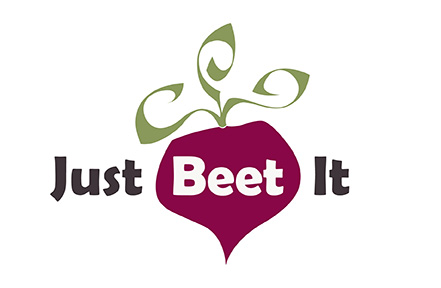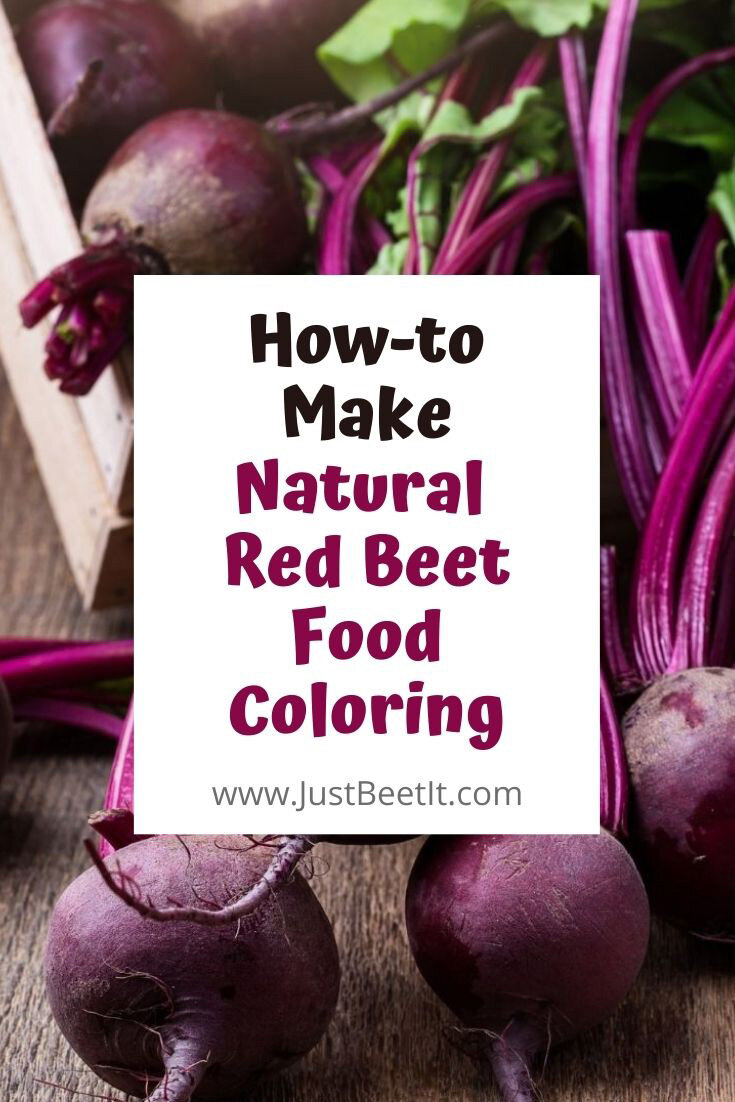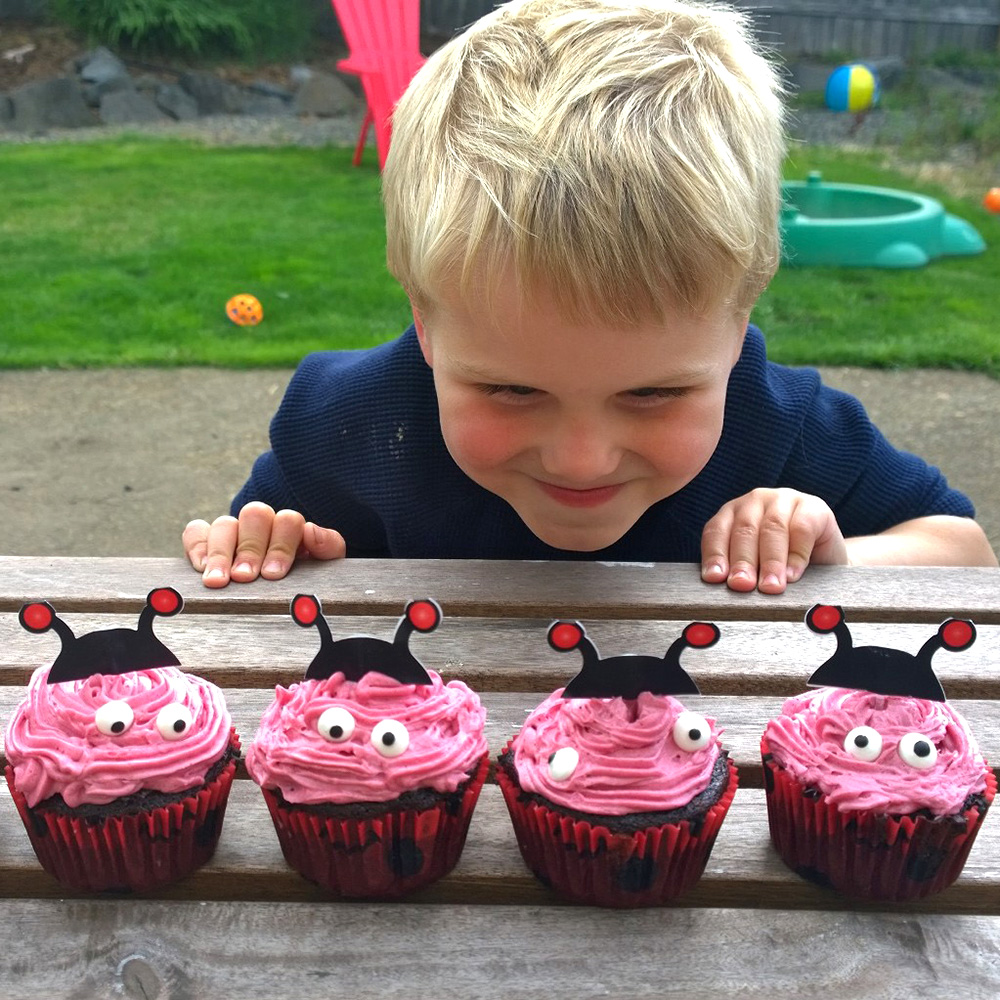Did you know that the vibrant red color of beets is perfect for creating a natural red food coloring? The bright stain from red beets that may cause you to cringe every time you think of cooking or handling beets is actually a beautiful, fascinating, and underdeveloped feature of the red beet.
Beets are strikingly red, contain a natural sweetness, and are filled with antioxidants, making the beautiful root vegetable a superb addition to desserts, drinks, baked goods, and more!
Why Use Natural Red Beet Food Coloring?
Red food coloring (such as Red 40 and others) is synthetic and artificial, consisting of chemicals used to add color to food; there is no nutritional value. Furthermore, although research is still underway, there are expressed concerns over the possible link between artificial dyes with allergies and hyperactivity in children.
Natural Beet Dye Health Benefits
Rich with vitamins, minerals, and antioxidants, the beautiful beet offers numerous health benefits. By eliminating artificial dyes and using the natural coloring from beets, your foods will have more nutritional value. Beets are known to boost immunity, reduce inflammation, balance blood pressure, and improve brain function. There are so many reasons to utilize the beetroot in every way!
Making dyes with natural ingredients is a healthy option for food coloring and it’s also a great educational tool for children to see the historical and natural process of using fruits and vegetables for dyes. Beet dye works well for Valentine's Day foods and crafts, naturally coloring Easter eggs, bridal and baby shower decorations and foods, fabric projects, and D-I-Y natural makeup, like beet lip gloss and rouge. Embrace the beetroot's extraordinary color and have fun with Mother Nature's beautiful vibrant gift.
Because the process may seem time consuming when creating beet dye, freeze remaining beet dye in covered ice trays for future projects. Then, you have an easy ready-to-use dye available to use any time.
Looking for some recipes using NATURAL BEET DYE, try delicious Vegan Vanilla Cupcakes with Natural Pink Beet-Dyed Coconut Cream Frosting (Gluten-Free and Paleo-Friendly) or a Smokin’ Hot Beeta-Rita: Beet Simple Syrup and Mezcal Margarita. Yes. Beetroot dye as a juice or simple syrup can be added to your favorite cocktails for a classic twist.
Depending on the the food or project and the desired color (pastel pink, vibrant pink, or red), there are several ways to make beet dye, varying from beet puree to beet juice to beet powder.
How to make Natural Red Beet food coloring
1. Beet Dye with Beet Puree
Boil two medium-sized beets with skin on until tender. Remove beets from pot and cool slightly. Remove skins if preferred (skins are edible but chunky). In a food processor (or Vitamix) blend beets with a few tablespoons of water or milk (non-dairy milk works well too) for a creamy texture. If the puree is smooth, then add a tablespoon or two to create a thicker dye. If puree is too chunky, strain the beet puree by using a sieve over a bowl (glass is usually best for non-staining). The strained beet juice in the bowl is perfect for food coloring.
2. Beet Dye with Raw Beet Juice
Raw beet juice extracted from a juicer makes a bold red dye. Keep in mind that juiced beets will create a bolder red color for dying; however, the flavor of beets may be more prevalent. Use beet juice raw or create a Beet Simple Syrup for a sweeter option.
3. Beet Dye with Beet Powder
A wonderful benefit for using beet powder over actual beets or beet juice, beet pulp, etc., is that the powder won’t add extra liquid to your food. Creating a fabulous texture for frosting sometimes requires some attention, so adding a dash of beet powder (to your desired color) is a great way to go. Plus - you can keep the remaining beet powder on hand for future recipes requiring natural dyes and to add to smoothies. Yum!
4. Beet Dye with Beet Juice from Packaged Beets
Packaged pre-cooked ready-to-eat baby beets (like Love Beets) from your local grocery store contain a decent amount of beet juice that can be drained from the package. Save the juice for beet dye. Make sure to add a small amount of liquid at a time. You don’t want to ruin your frosting’s or recipe’s texture!
5. Beet Dye with Boiled Beet Water
Boil down beets for color. Rinse the beets, eliminating all dirt. Cut beets in quarters. Place beets in pot and cover with water. Bring water to a boil (med-high heat). Reduce heat. Simmer until beets are tender and there is only a few tablespoons of water left. This dyed water is your food coloring. Using boiled beet water should be the last resort, as the boiled water is more diluted and watery than juiced or pureed beets.
Use the cooked beets in Roasted Beet, Orange, and Mint Salad, Roasted Beet and Delicata Squash with Quinoa Salad or Roasted Beets and Vegan Cashew Cream Crostini.
What are your favorite ways to include beet dye in your foods or craft projects? Comment below.
YOU MAY ALSO LIKE











